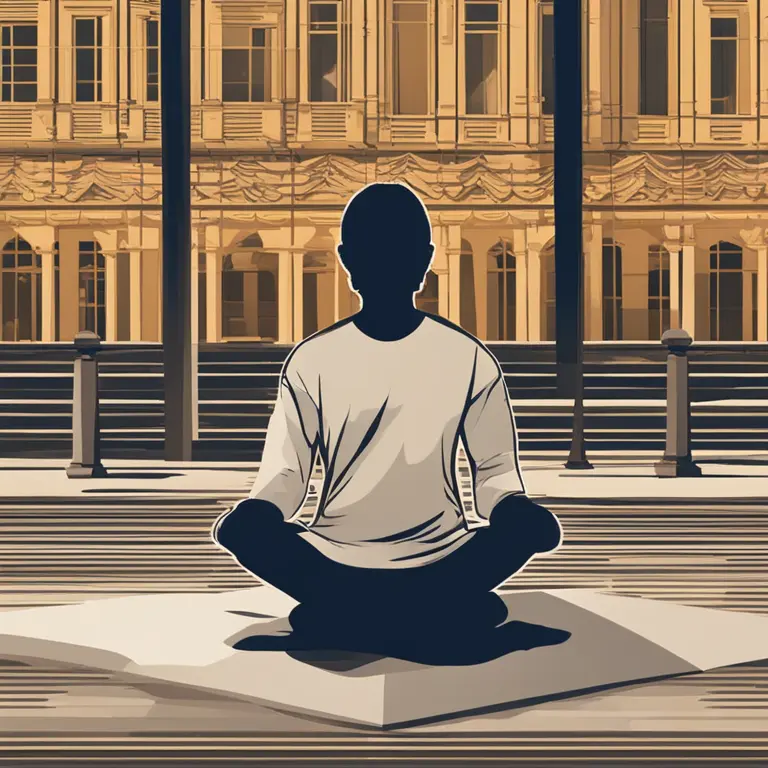
Calming Your Thoughts Through Mindfulness Meditation
Soothe your restless mind with effective mindfulness meditation techniques designed for managing racing thoughts and achieving mental tranquility.
article by Hina Kurosawa
Introduction to Mindful Calm
In our ever-accelerating world, the mind can often behave like a speeding train, dashing from one thought to another without pause. This reflection of our busy lives can lead to stress and difficulty in finding peace. Mindfulness meditation offers a reprieve by teaching you how to slow down your thoughts, allowing for a calmer state of mind. By incorporating this practice, individuals can manage their racing thoughts and cultivate a deeper sense of tranquility in their daily lives.

The Mechanics of Mindfulness
Mindfulness meditation is rooted in ancient traditions but adapts seamlessly to the modern era. It involves paying deliberate, nonjudgmental attention to the present moment. This form of meditation teaches practitioners to observe their thoughts and emotions without getting entangled in them. By consistently applying mindfulness techniques, you can train your mind to focus on the now, which is particularly powerful for those whose thoughts are always racing ahead to the 'next thing' or lingering on the 'what ifs.'

Getting Started with Meditation
Embarking on a mindfulness meditation journey begins with small, attainable steps. Start by allocating a few minutes each day to sit in silence and focus on your breath. This fundamental practice anchors your attention and counters the stream of restless thoughts. As you progress, periods of meditation can be slowly extended, nurturing your ability to stay in the moment for an extended timeframe and gradually quieting the mind’s chatter.

The Role of Breathing
Central to mindfulness meditation is the breath. It serves as a natural point of focus that helps to pacify the thoughts. By directing your attention to the rhythm of your breathing—inhaling and exhaling—you create a gentle, repetitive pattern that occupies the mind and eases its pace. This shift away from scattered thoughts to a single point of focus is key in silencing the internal noise.

Embracing the Practice
True mastery of mindfulness meditation doesn't happen overnight. It requires consistency and patience. Acceptance is also crucial; there will be days when meditation feels exceptionally challenging, and your thoughts seem impenetrable. Instead of resisting, observe the commotion of your mind with kindness and without judgment. The practice lies as much in recognizing and returning from distraction as it does in maintaining focus.
Technological Tools and Resources
By 2024, technology has seamlessly integrated with mindfulness practices, offering apps and virtual sessions to assist with meditation. These tools can be especially helpful for beginners, providing guided meditations that help navigate through the initial stages of learning to control racing thoughts. They also offer community support, allowing individuals to share experiences and gain encouragement on their mindfulness journey.
Advancing Your Meditation Practice
As your mindfulness practice deepens, you can enhance it by attending workshops, joining meditation groups, and exploring various mindfulness exercises. Engaging in activities that require present-moment attention, such as yoga or tai chi, complements your meditation practice and further supports the reduction of racing thoughts. Over time, the skills developed in mindfulness meditation can permeate all areas of life, contributing to greater overall well-being.
Published: 1/18/2024
Modified: 1/18/2024
More predictions
Come back here soon to learn more about yourself and your future


Mindfulness Meditation As A Tool for Anxiety Relief
Discover how mindfulness meditation can be a powerful tool for anxiety relief, fostering a sense of peace and well-being through simple, guided practices.


Mindfulness Meditation: A Path to Lasting Happiness
Discover how mindfulness meditation can enhance your sense of wellbeing and lead you to a happier life in this insightful article.


A Beginner's Guide to Mindful Meditation Explained
Discover the essentials of mindful meditation to start your journey towards inner peace and heightened awareness with this beginner-friendly guide.